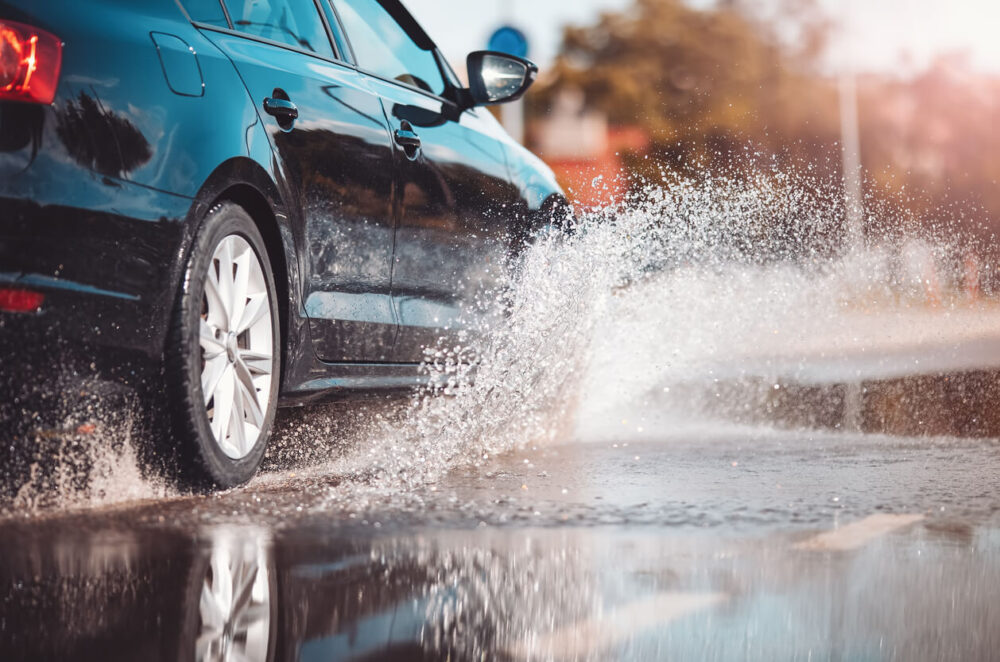Wander With Wonder – Discovering Wow Moments Around the World or Across the Street
Discover common weather-related car accidents and learn safety tips to navigate challenging conditions while traveling.
Weather can significantly impact driving conditions and turn familiar roads into dangerous obstacles. Sudden changes in weather, from rainstorms to icy mornings, can catch many drivers off guard and lead to accidents. By being aware of how different weather conditions contribute to car accidents and employing strategies to prevent them, you can keep yourself safer on the road. Read on to explore the most common weather-related car crashes and tips that can help you stay safe, even when Mother Nature is at her most violent.
The Impact of Weather on Driving Conditions
Weather plays a critical role in creating hazardous driving conditions. Weather contributes to 16% of fatal crashes nationally, which shows how much weather conditions can impact road conditions. Rain and snow can make the roads slick, potentially leading to a loss of tire traction and an increased risk of skidding or hydroplaning. For example, fog and heavy precipitation can reduce visibility, making it harder to see vehicles, road signs, and other hazards. In freezing conditions, black ice can become a hidden threat that causes a sudden and severe loss of control of your vehicle.
Furthermore, drivers often underestimate how much weather conditions can impact braking distances on the road. Stopping on wet or icy roads can take far longer than on dry surfaces, especially if your tires are older. Understanding how weather affects driving helps explain why certain accidents occur more frequently during inclement weather.
Common Types of Weather-Related Car Accidents
To understand just how severe weather-related car accidents can be, you need to consider the common types of accidents that occur due to this cause:
Hydroplaning and Skidding: When water builds up on the road surface, tires can lose contact with the asphalt, thus causing hydroplaning. Similarly, ice and snow can cause skidding, which makes it nearly impossible to steer or stop a vehicle.
Rear-End Collisions: Reduced visibility and slick roads increase the risk of rear-end crashes as drivers often misjudge the time needed to stop in poor conditions, leading to accidents.
Multi-Vehicle Pileups: These accidents often occur in fog or heavy snow, where limited visibility and sudden stops create chain-reaction collisions. One mistake can lead to a pileup involving multiple vehicles.
Run-Off-Road Crashes: Slippery roads increase the chance of losing control and veering off the road, and this type of accident is hazardous if the vehicle hits a tree or barrier or rolls over.
Any of the above accidents can have devastating consequences in bodily harm or injury, which is why the best strategy is to employ safe measures to avoid a crash.
Hydroplaning is a risk in bad weather. Photo by LeManna via iStock by Getty Images
Weather-Related Accident Prevention Strategies for Drivers
The prevention strategies that can be used to reduce the likelihood of a weather-related accident are the same as those which you can use to prevent the majority of accidents on the road:
Reduce Speed: In hazardous conditions, drive below the speed limit to give yourself more time to react and brake.
Increase Following Distance: Keep a greater distance from the car ahead to ensure you have enough time to stop if you start to skid or they brake suddenly.
Check Your Vehicle: Regularly inspect tires for tread depth and proper inflation. Ensure your brakes are in good condition and wipers are functioning well to clear your visibility.
Use Headlights Correctly: Turn on your headlights in fog, rain, or snow to improve visibility, and avoid using high beams in foggy conditions, as they can further reduce your visibility.
Avoid Sudden Movements: Brake gently to avoid skidding and steer smoothly to maintain control if your car starts to hydroplane.
Stay Aware of Black Ice: Be cautious on bridges and shaded areas where black ice forms easily.
The last thing you want as a driver is to be involved in an accident, as accidents can cause various injuries at any speed. Use all of the above tips to reduce the chance of this happening and stay safe on the road.
Learn prevention techniques to stay safe during adverse weather conditions. Photo by Erich Fend via iStock by Getty Images
Improve Your Driving Habits Today
Weather-related accidents can be very severe, but understanding the common risks and adopting preventative measures to reduce the likelihood of them occurring can help. Adjust your driving habits to match road conditions, stay aware of the vehicles around you, and always keep your vehicle well-maintained to reduce the risk of an accident. Safe driving saves lives, even in challenging weather, but it’s not foolproof. If you are involved in an accident someone else is responsible for, reach out to an accredited lawyer to discuss your case and the legal options you may have.
Once you have brushed up on the best prevention strategies for avoiding an accident in bad weather, we invite you to explore Wander With Wonderour favorite road trips for some of .
.
